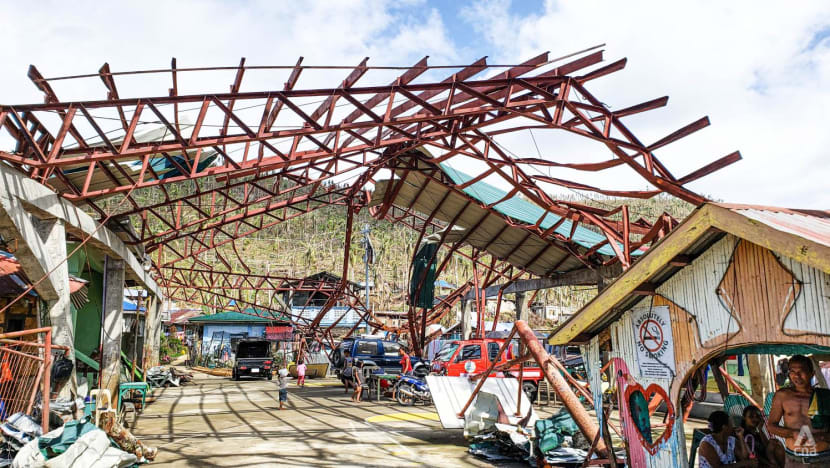
BANGKOK: Kiven Meco Luzano, like nearly everybody else, just didn’t see it coming. Of course, he knew a typhoon was barrelling towards his community in Southern Leyte. Powerful storms are regular visitors to this part of the world.
But Rai - or Odette, as this super system would be called in the Philippines - would arrive with a rare fury.
The school teacher watched with his family as the daylight was extinguished, earlier than normal. Heavy rain set in and he cooked an early dinner, keeping watch on the creek that flowed into the sea outside his home.
They had not planned to evacuate but as lightning started to crack overhead, illuminating damaging winds ripping at the township, roof by roof.
“Minutes after that, my father told us, ‘Get out of there because the water is coming’. The tide was rising at the time,” Luzano recounted.
“And then we were panicking. Emotions were pouring out. People were crying and shouting. Others were screaming. Since I was the only man in the house, I was the one who carried my grandmother, who was already a senior citizen. I carried her out and up to higher ground.
“My mind was just thinking about what will happen next.”
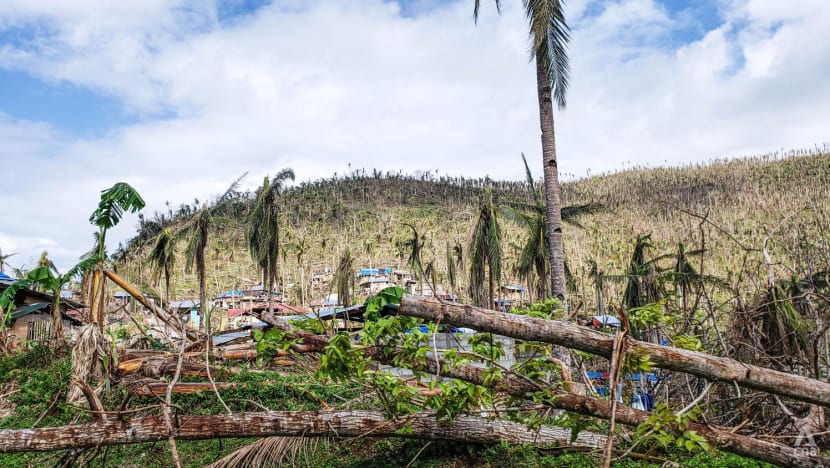
As it slowly churned across the Visayas in mid December, Super Typhoon Rai brought gusts as strong as 260 km per hour. More than 400 people would be killed and an estimated 1.5 million homes destroyed or damaged.
Rai was one of the most powerful storms to hit the Philippines in recent history. It was only the third category five typhoon ever recorded in the South China Sea and stirred bitter memories of Typhoon Haiyan, a devastating disaster that hit the region back in 2013.
“This time, it was our turn to experience the wrath of a typhoon,” Luzano said.
The reality for residents along this archipelago is that destructive typhoons like these will keep on coming. Climate change science says so.
Typhoons in the Philippines are becoming more intense and unpredictable. While damaging weather patterns are highly complex and multi-faceted, research has shown that climate-related factors are contributing to the more frequent emergence of monster storm systems.
About a quarter of the world’s typhoons already hit the Philippines, and while that number is not expected to rise in the years to come, because of climate change, they are expected to hit harder and move along paths that are difficult to predict and prepare for.
The skies had barely begun to clear in the Philippines when it became apparent that Rai’s tail would have a sting in neighbouring Malaysia.
As turbulence lingered in the atmosphere, a tropical depression was about to unleash the country’s worst flooding in half a country.
And again, despite forecasts of heavy rain, no-one really saw what was coming
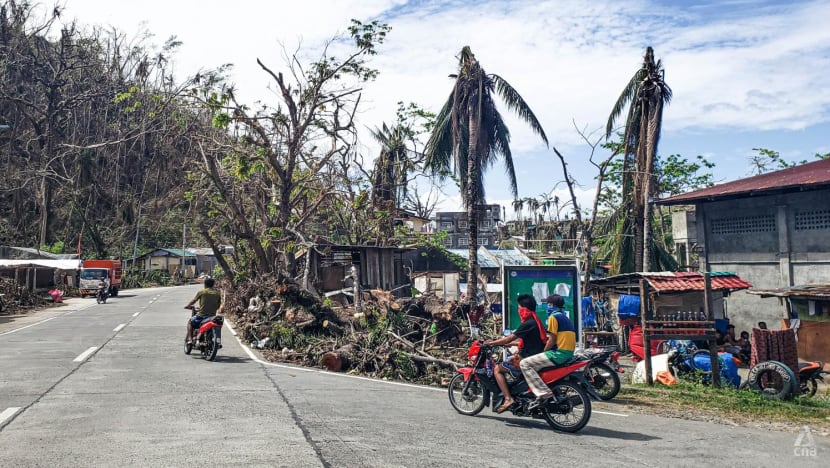
The only part left of Rohana Mahfuz’s family home are its front stairs.
As water surged from the mountains surrounding Hulu Langat, about 40 km from Kuala Lumpur, the Lui river peaked and transformed into a dangerous torrent carrying with it all in its path.
Once the water had reached chest level, 75-year-old Mahfuz said she knew it was time to go. It was dark outside and chaotic.
She escaped to higher ground as the house built by her late father in 1969 along with its manicured lawns and fruit trees was swept away.
“I just felt blank and weak in the knees. Everything I owned was lost,” she said, comparing the flood to a “tsunami”.
Across Peninsular Malaysia, similar scenes were playing out. Tens of thousands of people would become displaced as, in some places, hundreds of millimetres fell in intense downpours.
Those who could rushed to evacuation shelters; many remained stuck in their vehicles as motorways ground to a halt. Landslides blocked highways as emergency personnel struggled to reach victims.
Officials were quick to call it a “once in a century” flood. However, experts say it is likely that these types of disasters will be far more common in the future as global warming picks up pace.
The latest report from the Intergovernmental Panel on Climate Change (IPCC) states that heavy rainfall will become more intense and frequent right across Asia in the coming decades. It means river basin flooding will change and become more costly, especially to rapidly urbanising cities.
In Singapore, for instance, 2021 was the second wettest year since 1980, with January logging the most rain in more than 100 years.
At the same time, sea levels around the region have increased faster than the global average and will continue to rise around Asia, causing more coastal areas to flood, scientists have predicted.
These issues will not exist in isolation. Cascading events - when one calamity causes or intensifies another - will be problematic.
“We are now seeing in Malaysian rainfall records, the intensity of rain becoming much higher than over the last 50 years. And the period over which rain falls is now longer than what it was in the last 50 or 60 years,” said Zelina Zaiton Ibrahim, an IPCC author and associate professor at the Faculty of Environmental Studies at Universiti Putra Malaysia.
“Coastal areas are very much at risk. And so heavy rain with sea level rise is a double risk, a compound risk because these two things are happening together.”
At the end of 2021, Malaysia wallowed in the aftermath of an event its systems, infrastructure and people were unprepared for. The government eventually estimated losses to be RM6.1 billion (US$1.46 billion).
It was yet another reminder of the importance of adaptation to a fast changing climate. And it was proof that the region is not yet ready for what the future holds.
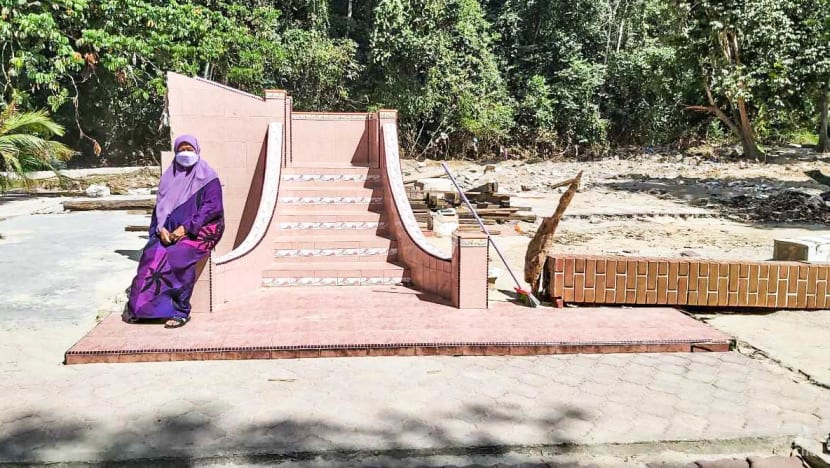
Much discussion about solutions to climate change centre around ways to stop it, or at least slow it down. At high-level talks and in science journals, the notion of reducing carbon emissions from entering the atmosphere is referred to as mitigation.
Efforts to limit global temperature increase to 1.5 degrees above pre-industrial levels are crucial to preventing disasters of even greater magnitude from occurring in the future.
But the second pillar of climate change action is learning to live with the impacts of what mankind has caused.
Adaptation to a changing planet will involve building new infrastructure, developing resilient populations, improving disaster early warning systems, future-proofing city planning, protecting and restoring natural coastline protections like mangroves and safeguarding water systems, according to experts.
Right now, just a fraction of global climate finance is directed towards adaptation. Adaptation finance totalled about US$20 billion for developing countries in 2019 - far below the US$300 billion the UN predicts could be needed annually by 2030.
Boosting such spending is on the global agenda. At top level talks in Glasgow last year, developed nations pledged to double their adaptation funding by 2025.
It is seen as a crucial way to lessen the burden on poorer countries, which are not only increasingly vulnerable to climate change, but the least equipped to contend with the impacts.
In Southeast Asia, developing adaptation policies is underway but mostly still in an early stage. The complexities of the challenge are daunting and the associated costs will stretch current day budgets and undoubtedly burden future political administrations.
But, there is a shift in mindset - driven by unfolding disasters in regional cities and towns - that has decision makers ready to accelerate their adaptation plans, according to Lauren Sorkin the executive director of the Resilient Cities Network.
“It's really woken people up to the fact that climate change is here now. It's not something that's in the future. And in that way, I think it absolutely moves the needle because it makes us realise that we have to actually build our resilience now, to these challenges of heat and water. And we can't wait,” she said.
“What's different about these storms is their intensity. And while that's been surprising to many people, I think there's a difference between being surprised and unpredictability. And I think the reality is that we know we've altered our climate,” she added.
“And the science tells us that this is what we are going to be exposed to, and we’re really vulnerable to, not necessarily an increased number of storms, but increasing intensity.”
Sorkin added: “To build resilience, and to adapt, we have to first recognise our shared vulnerability. Disasters make us acutely aware of our shared vulnerability. And in that way, they may spur us to action.
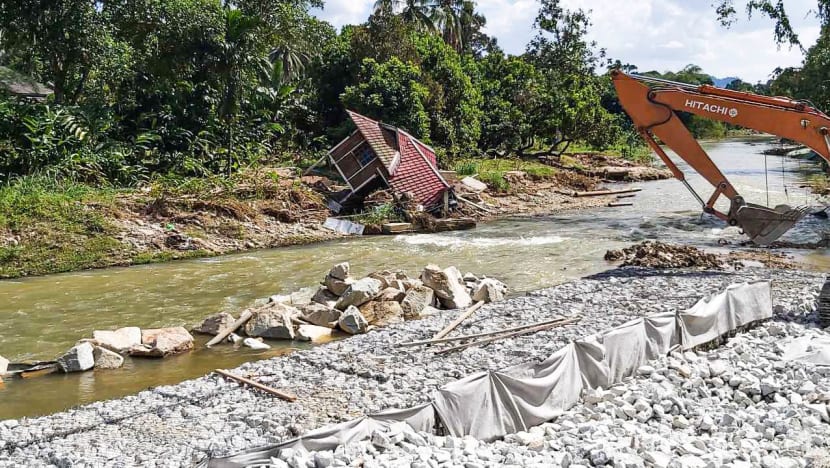
It was just days after the deadly floods that Malaysia’s Environment and Water Ministry confirmed that the country would apply for funds from the United Nations to help it develop its adaptation policies.
It was a significant moment: the first time the Malaysian government has sought any external money for adaptation.
The amount requested from the UN Green Climate Fund was US$3 million, a seemingly paltry amount in the wake of an eye-watering damage bill from the flooding. But it symbolised intent at a time when criticism was mounting about the slow response to the unfolding disaster.
Putrajaya intends to release a National Adaptation Plan by the end of this year, which would form a framework for bigger decisions to be made in key areas, like water, agriculture, food security, public health, forestry and infrastructure.
“I think it's very good timing to review, reflect, and perhaps rejuvenate some of our existing policies,” said Khamarrul Azahari Razak, the director of Universiti Teknologi Malaysia’s Disaster Preparedness and Prevention Center.
“Not only in Malaysia, but in many developing countries, perhaps they are not willing to invest before a disaster. They wish to spend during the disaster or after the disaster. It's not easy to convince policymakers to invest before it’s happened,” he said.
How this disaster unfolded has illuminated the gaps and weaknesses that could better inform future policymaking. It showed where natural defences were missing where forests once grew and how rivers forged old paths despite human development of roads or buildings.
Yet, making plans is difficult when the severity of the climate situation is constantly shifting. Science can only predict so much, especially in Southeast Asia when relying on fairly limited historical data.
“The biggest problem, in a way, is the uncertainty - decision making under uncertainty,” said Zelina of Universiti Putra Malaysia.
“How much do I want to spend on my budget in preparing for this? Is this really going to happen? Am I just going to spend something which might or might not happen?”
Decisions made in the past about clearing land, redirecting water resources or building up urban areas may have been safe then, but are now risky. Communities that never had to face flooding for instance, now do.
It means that future adaptation choices need to account for global warming scenarios that greatly would increase risk to populations, Zelina added.
“We have to change our mindset. And the mindset is not just from the government level, it's also the general public about how to make decisions thinking about the possible risks that might happen,” she said.
“Now you have to start to think about what climate events could happen that could affect me. Is this house near a river? Is it on high ground? If something happens, where's the nearest rescue centre, for example?
“But the biggest problem for a lot of Asia is that people cannot afford to make decisions based on these factors. They don't have the financial means in order to escape from living by the side of the river or something like that.
“The vulnerability that they have to these climate factors are, I think, the biggest stumbling block for Asia to try and overcome,” she said.
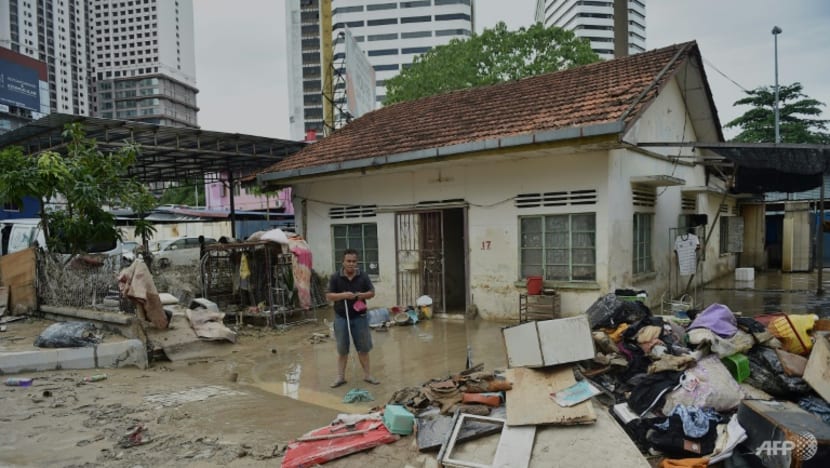
Amid the confusion and fear on the night of Dec 18, the breakdown in communication and the looming floodwaters, Ili Nadiah Dzulfakar actually discovered a feeling of hope.
The environmental activist and co-founder of Klima Action Malaysia was part of a mobilisation of civil society groups working together to provide information and relief. Despite everything, in the darkness without direction from authorities, she saw people band together to enable each other’s resilience.
“When the waters were rising really fast, during the critical hours, there was not a single official, effective communication from the authorities,” she recalled.
“So people had to rely on social media for every single thing, including relief and rescue efforts. So, it was really incredible to see that people have stepped up.
“Seeing this happening gives me so much hope that, you know, the people can really do something if they put their mind to it.”
It was yet another reminder, for her, that adaptation needs to be implemented by the people themselves as part of a localised, grassroots solution.
“The need to have safe spaces for vulnerable communities to participate in decision making on disaster risk is absolutely critical. And we have seen what has happened if you don't include them,” Nadiah said.
Khamarrul of the Disaster Preparedness and Prevention Center agrees and wants more attention paid to the resiliency of local governments at the community level.
“Most of the disasters or impacts of climate change that occur, you can see at the local level. So if you don't invest at the local level, then you may miss some of the potential to respond and recover,” he said.
Incorporating generational, rural and indigenous knowledge should be part of the ongoing strategy too, he argued, even if that can be difficult to inject into national policy.
“Something that we are missing is learning from nature and learning from the past. Traditional knowledge and indigenous knowledge though, from the scientific point of view is sometimes not easy to quantify,” he said.
“Hopefully, the national policy will address this, especially from this recent tragedy."
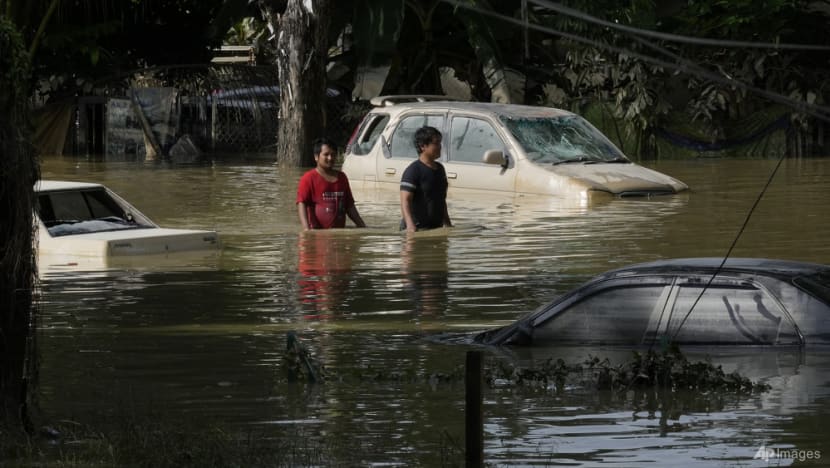
Across the disaster affected areas of both countries, the rebuilding and rehabilitation will be lengthy. In the Philippines especially, this has become a cruel ritual.
In Sogod in southern Leyte, the trauma was tangible on the streets as victims contemplated the weeks and months ahead.
“They have this deathly look on their faces. They worry about what's in store next, this year in 2022. Perhaps another typhoon fiercer than Odette will come, and they have just finished rebuilding their houses. That's why many haven't started rebuilding yet,” said Zenaida Calungsod, a local church worker.
“In other places, some people are resorting to begging in the streets from cars passing by. It's really pitiful,” she said.
Youth climate advocate Alyanna Lauzon wants more from her country’s leadership. Weeks after Typhoon Rai struck her home city of Surigao on the island of Mindanao, electricity remained cut, internet signal was non-existent and many residents had no access to their water supply.
The painful cycle of re-starting life again and again in the wake of nature’s destruction is taking its toll on the community.
“We cannot keep on rebuilding and starting again from ground zero every time we experience disasters,” said the 19-year-old student, who is also a national campaign coordinator for Youth Advocates for Climate Action Philippines.
“It’s traumatising thinking of it now, and it has been more than a month since it happened. But I am actually anxious about the possibility of it happening again, since it is really inevitable if we still will not address the climate crisis.
“There is so much work that needs to be done for the country, when it comes to the impacts of climate change. Because if we were ready, we would have been able to save lives of the people that we lost during the typhoons.
“If we were ready, we would have infrastructure that could withstand the typhoon. And if we were ready, we would have better livelihood planning for those who are most vulnerable.
“I think that the Philippine people actually deserved better than this.”
The Philippine government has enacted a National Climate Change Action Plan with a focus on food security, smart cities and water sufficiency, among others.
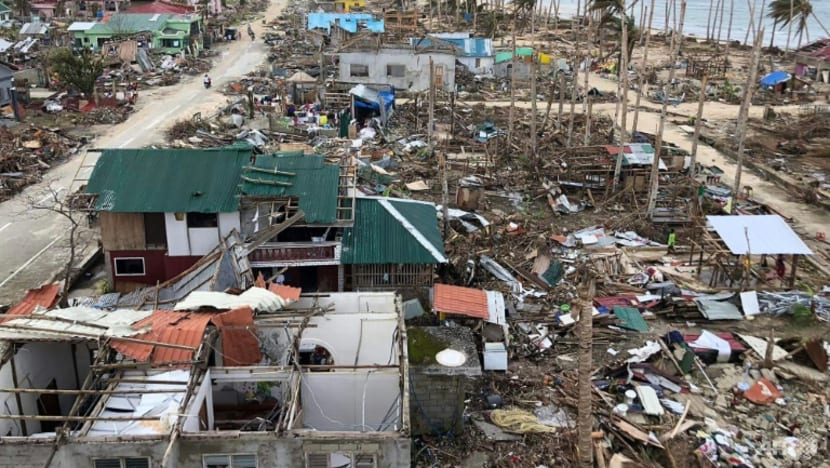
But, Antonio La Viña, an environmental policy expert and executive director of the Manila Observatory says adaptation and resilience is made near impossible for people when they are victims.
Powerful typhoons year after year are causing a devastating loop. Past abilities to bounce back are no longer sufficient when the disasters are so powerful.
“Typhoon Rai told us, showed us, how adaptation and resilience really fail before us,” La Viña said. “Can you really expect people to be resilient, to put into place long term adaptation programmes, if there's just going to regularly events like this that destroy?”
“I mean, rationally, why would you rebuild the way you rebuilt 20 years ago, if you know that an event like this will happen again, even next year or in the next five years?
“If they're just going to be the people that are victimised by climate change, you cannot expect them to take the lead in mitigation and adaptation, they won't be in a position to do so,” he said.
The answer, he argues, is the faster mobilisation of a loss and damage funding facility, where industrialised countries with historically high levels of carbon emissions would compensate vulnerable nations for the climate damage caused.
It was a key point of discussion at COP26 in Glasgow, and while progress was made, countries did not agree on a dedicated fund, which nations like the Philippines could apply to.
Negotiations continue and there is expectation among backers of the facility for it to be finalised in time for the next round of climate talks in Egypt later this year.
That will not come soon enough for the likes of Luzano in Southern Leyte and thousands of others putting their lives back together. After Rai hit, he was able to keep his family safe but his home was ruined.
“One room looked like it was mixed in a whirlpool. That was how powerful it was,” he said.
“In our case, we are thankful that nobody died in our village. It didn't matter if our things got lost or destroyed. What's important is that we're alive.
“I've been trying to instil in my head now that we should never be complacent in times of calamity. This is all because of the actions of man. We have to sacrifice. I guess this is what we call the reality of climate change."